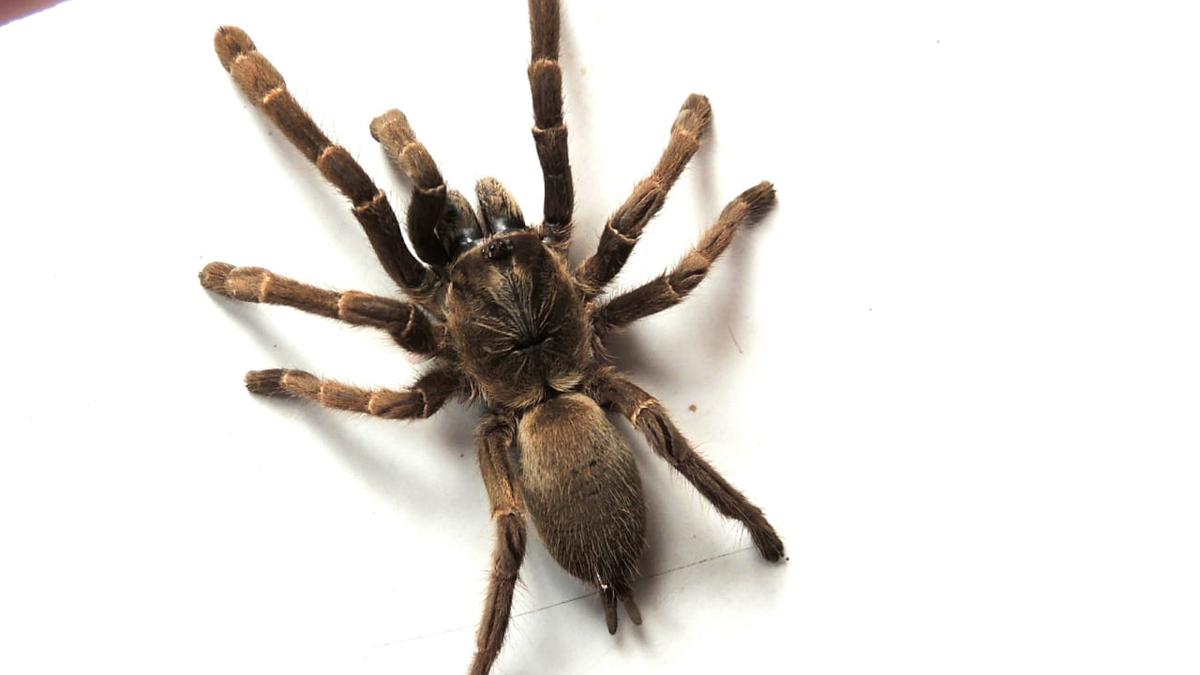
The Nilgiris’ endemic tarantula could be under threat from habitat loss and climate change, say researchers

The Nilgiri large burrowing spider, Hapoclastus nilgirinus
| Photo Credit: Special Arrangement
Efforts need to be taken to study the population and distribution of a little-known species of tarantula, endemic to the Western Ghats, which is highly sought-after in the pet trade, say researchers.
The elusive Nilgiri large burrowing spider, Haploclastus nilgirinus, a venomous species of tarantula, which is rarely seen and has never been studied, could be threatened by the illegal trade in wildlife as well as by climate change, warn researchers who have undertaken preliminary studies of the species.
Researchers A. Abinesh and N. Moinudheen, who have begun to study the ecological niches that the species occupies, recorded a small population of the species in an orchard near a tea estate in Coonoor recently.
In their 2017 record, ‘Sighting of Nilgiri Large Burrowing Spider from Nilgiris, Western Ghats, India,’ published in the Indian Journal of Arachnology, authors, N. Moinudheen, D. Jeyabalan and Samson Arockianadhan state that the Nilgiris is a “connective junction for Eastern Ghats and Western Ghats with high endemism. The spider diversity is poorly studied in the Nilgiri region,” the paper state, adding that habitat alteration by humans, combined with global warming could threaten the species.
The spider is also believed to be venomous though reports of it biting people seem rare.
“The Madras Museum contains a single, somewhat damaged specimen of this species collected from Vandiperiyar in Idukki district from what was then Travancore Kingdom by S. Ananda Rao after it had bitten a worker (referred to by Mr. Ananda Kumar as a coolie),” said Mr. Moinudheen. “The bite on the coolie was quite severe and was inflicted on the forefinger…His pain and swelling persisted for three days, after which it subsided. But curiously enough, even now after a lapse of nearly six months since the occurrence, he states that he has no proper sensation in that finger and that it gets very easily benumbed when the hand is wet. Venom probably strong. Depending [on the] location of the bite and the amount of venom released this might be a painful experience,” Mr. Ananda Rao had concluded in his notes of the incident.
Being a species adapted to the semi-evergreen forests of the Nilgiri mountains, researchers worry that the Nilgiri large burrowing spider could be severely threatened by climate change as well as habitat loss.
“Conservation efforts for the Nilgiri large burrowing spider should focus on protecting and preserving its habitat, for which studies should be done to identify the areas that the species uses. Furthermore, as at least some habitats are in the interface between agricultural areas and forests, people should be sensitised to not use pesticides that could harm them. As a last resort, if the population is found to be small, then captive breeding and reintroduction should be considered,” said A. Abinesh, one of the researchers involved in the study.
#Nilgiris #endemic #tarantula #threat #habitat #loss #climate #change #researchers


